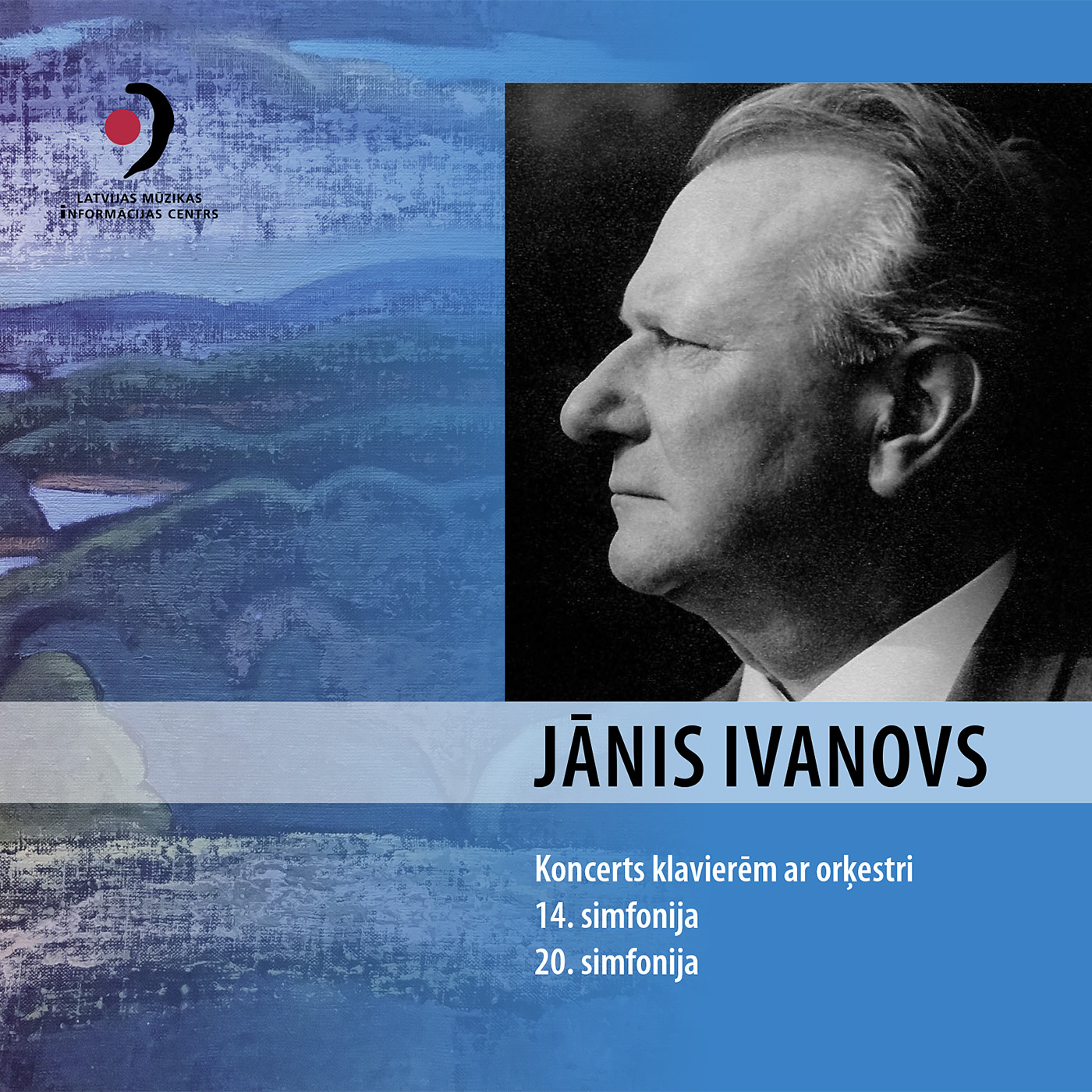Janis Ivanovs holds the distinction of being the most significant and prolific Latvian symphonist of the second half of the 20th century, with twenty-one symphonies to his name (Symphony No. 21 remained unfinished at his death and was completed and orchestrated by Juris Karlsons). When the First World War broke out his family fled to Russia, returning when hostilities ended. In 1924 he enrolled at the newly established Latvian Conservatory, studying conducting with Georg Schnéevoigt and composition with Jāzeps Vītols. He himself was a professor of composition there from 1944 until his death in 1983. He also worked as a sound engineer in the 1930s, and for many years was artistic director of Latvian Radio.
The Piano Concerto is one of three concertos the composer wrote, the other two being for cello and violin. It dates from 1959, so is the earliest of the works on the disc. It stands on the threshold of a new radical direction that Ivanovs’ music was to take in the 1960s. Being a pianist himself, he wrote fluently for the instrument. Needless to say the Concerto’s technical demands are considerable. The opening movement begins with three brass chords, after which the soloist enters the fray. The overall tenor is assertive and commanding, the terrain rugged. A broad romantic sweep runs the course. Although the Andante has a fairly static quality, its melodic richness rivals the very best. Ivanovs' colourful and imaginative orchestration is a positive factor. The finale is carefree and has a confident spring in its step, with the piano writing spiky and rhetorical. The Russian pianist Igor Zhukov plays with commanding authority. He studied with Emil Gilels and Heinrich Neuhaus and was a friend of the composer, so is an ideal interpreter. I was very sad to discover that Zhukov died only a month ago on 26 January 2018, aged 81.
Written in 1971, the Symphony No. 14 ‘Sinfonia da camera’ is scored for strings alone. In three movements, it’s relatively brief in duration. The first movement sounds world weary with the string sonorities radiating a piercing chill. The dissonant opening chord of the central Andante carries forward the wintry theme. Out of the hushed stillness a solo violin wanders, as if lost, through a stark landscape. Although Ivanovs ups the rhetoric in the third movement, there's an overall disquiet, but he allows himself some time for sober reflection.
The Symphony No. 20 was composed in 1981 and was premiered that same year. Like all his symphonies, bar four, it's in four movements. Ivanovs was drawn to this traditional form. Having confided to his wife that it was to be his requiem, he forged it along the lines of a deeply personal statement. In it he pours out his soul, infusing the music with pain and suffering. In the opening movement there's drama and inner conflict and midway, to heighten the atmosphere, a funeral bell tolls. The elegaic Adagio is Ivanov's contemplation of death, and opens very much in Mahlerian vein. He allows himself a fleeting glance back to his youth in the brief Menuetto (Reminiscenca). The finale is forceful and energetic, with some reflective moments, when the music becomes quite subdued. He introduces the tolling bell once again towards the close, ending the symphony in a restrained manner.
The recordings derive from Latvian Radio, taped between 1971 and 1982. They sound fine. The music, where tender lyricism and raw emotion rub shoulders, offers many rewards. Highly recommended.
Stephen Greenbank
Jānis Ivanovs. Klavierkoncerts, 14. un 20. simfonijas
Izpildītāji
Igors Žukovs
- klavieres
Latvijas Nacionālais simfoniskais orķestris
Latvijas filharmonijas kamerorķestris
Vasilijs Sinaiskis
- diriģents
Tovijs Lifšics
- diriģents
Sērija
Latvijas komponisti
Ieraksts
1971-1982
Izdošanas datums
04.09.2015
Skaņdarbi
Apraksts
LMIC 035
"Būdams apveltīts ar izcila un reti spilgta miniatūrista talantu, Jānis Ivanovs savā daiļradē tomēr neatlaidīgi ir kultivējis un audzējis simfonijas žanru. Vai viņš to sajutis un apzinājies kā misiju, sūtību - ienest latviešu mūzikā tik ļoti trūkstošos lielos mērogus, drāmiskos un traģēdiskos vējus? Jāņa Ivanova simfoniju evolūcija būtībā ir visa latviešu simfonisma izaugsmes ceļš."
Arnolds Klotiņš
Kritika

